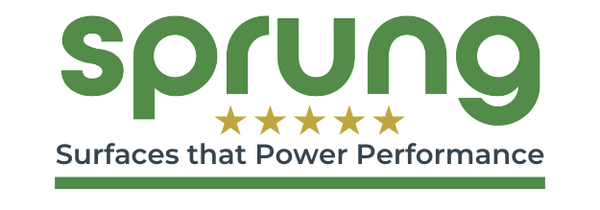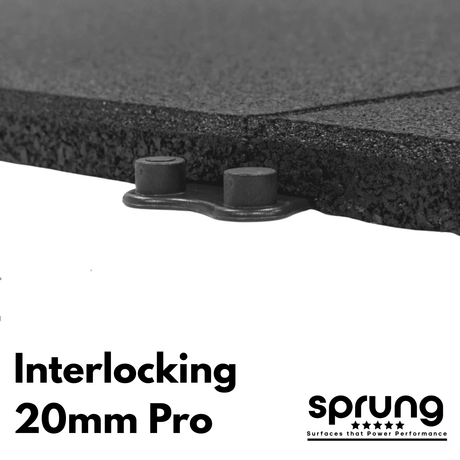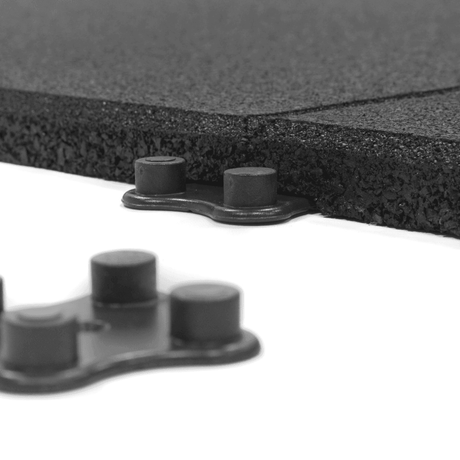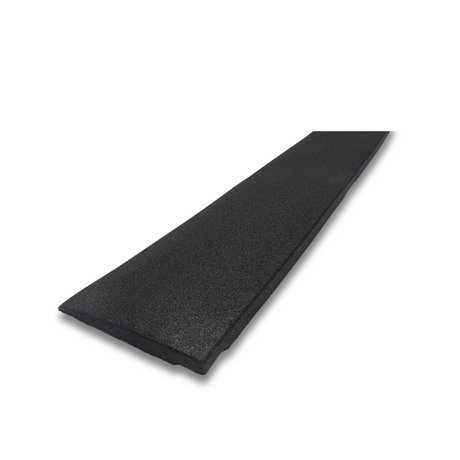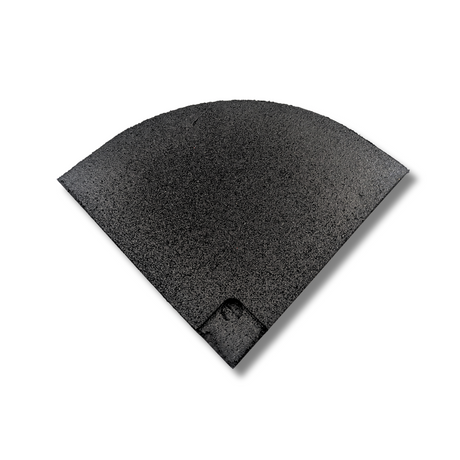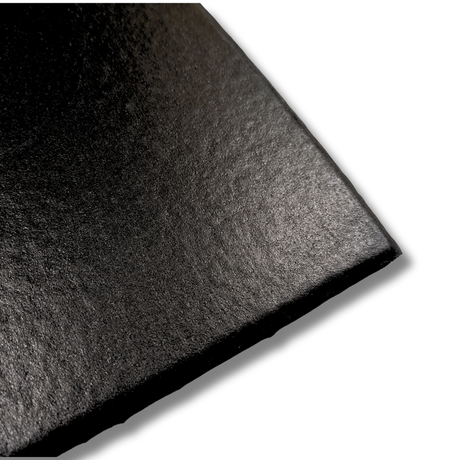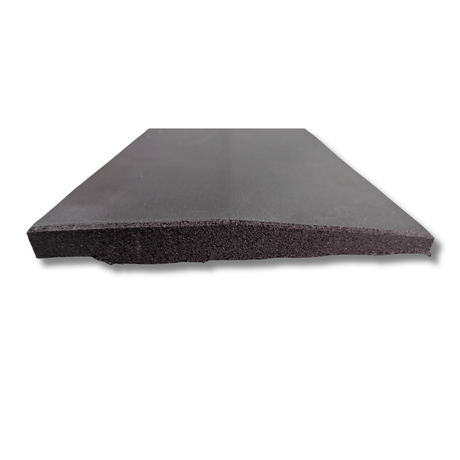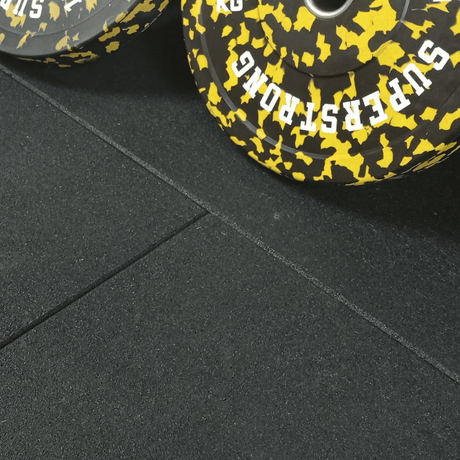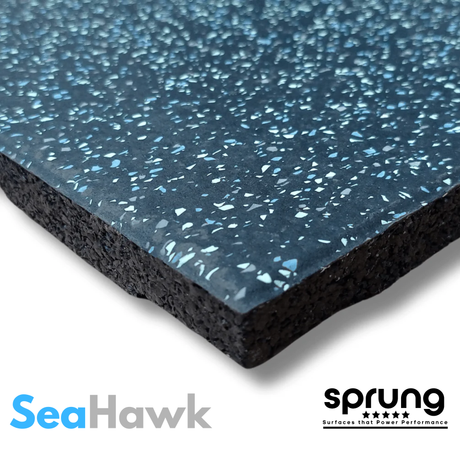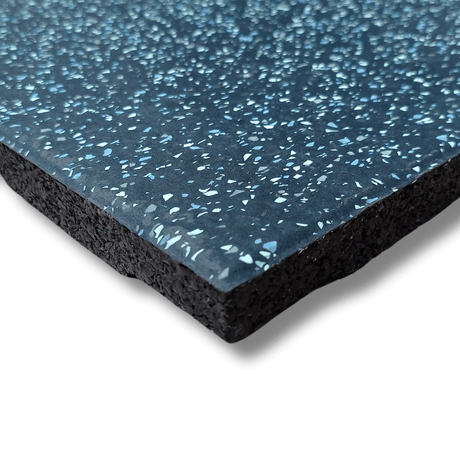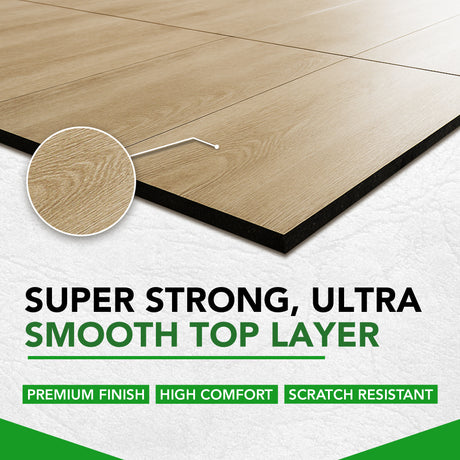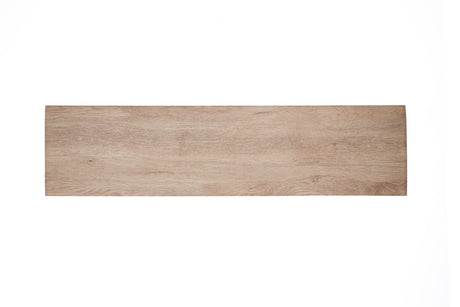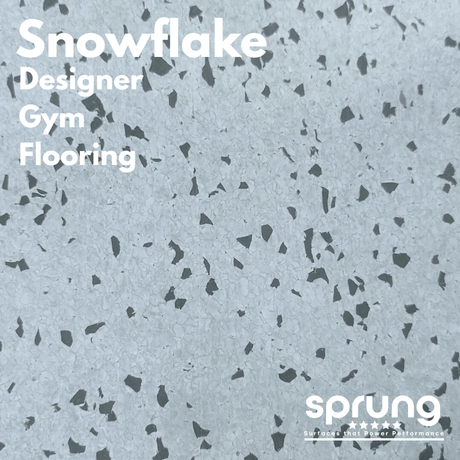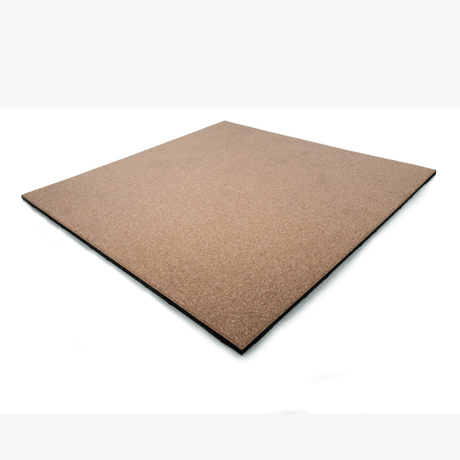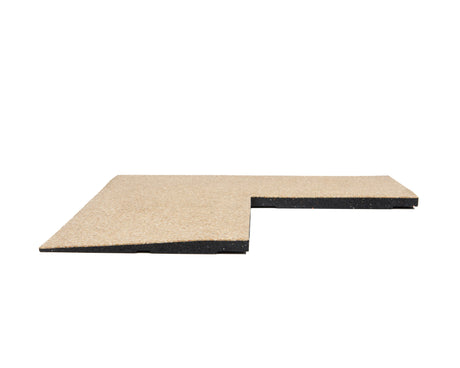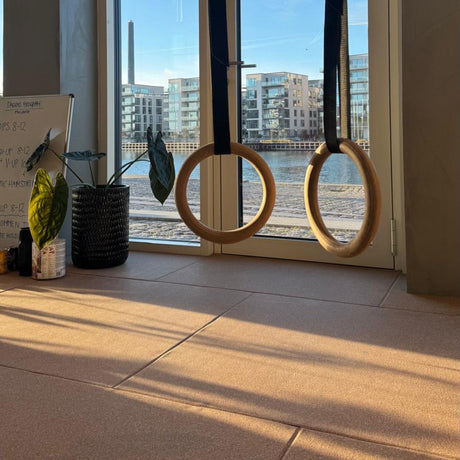When you’re crushing high‑impact workout, think burpees, box jumps, plyometrics, sprint drills or HIIT circuits, the surface beneath your feet matters more than you might realise. A hard, unforgiving surface can increase joint stress, raise your risk of injury and reduce how hard you can push.
But the right gym flooring supports your movements, protects your joints and makes the environment safer and more effective.
In this guide we’ll cover everything you need to know about selecting the right flooring for intense training, whether in a commercial facility or a home gym.
Why flooring matters for high impact workouts

High intensity training places repeated loads on the body, and the surface you train on plays a key role in how well your joints, muscles and equipment respond. If you use a hard surface like bare concrete you lose shock absorption, reduce comfort and increase risk of slip or fatigue. For impact exercise you want an adequate level of shock absorption while providing a firm surface to work out.
Here are some of the main issues to watch:
- Joint protection – landing, jumping and changing direction put large forces through knees, ankles and hips. A softer surface helps reduce repetitive stress.
- Slip resistance and traction – fast‑paced, dynamic movements demand a non‑slip surface for safety.
- Durability and equipment protection – heavy weights, sleds, cardio machines generate wear and impact; the floor must handle it.
- Noise and vibration – especially if your gym is at home or above other rooms, impact and equipment noise can matter.
- Maintenance and longevity – the right gym flooring should be easy to keep clean, durable and appropriate for the workouts it hosts.
Because of this, when asking “what surface is best for high impact workouts”, you’ll need to think not just about material but thickness, installation style, surface finish and the type of training you’ll do.
Key factors to consider when choosing gym flooring
Here are the main criteria to assess when selecting flooring for an intense workout space:
Material & construction
Choose flooring made from high‑density materials designed for fitness environments (rather than general house flooring). For example, rubber flooring is widely regarded as the go‑to solution for home and commercial gyms.
Shock absorption
Look for a surface that reduces impact forces. It's recommended that rubber flooring tiles or interlocking mats for high‑impact zones are the most effective in providing impact absorption.
Thickness
The thicker and denser the flooring, the more impact it can absorb. For cardio and HIIT zones, at least 8‑10 mm of material is recommended; heavier lifting or plyometric work may need 20 mm+.
Non‑slip traction
Sweaty workouts, fast foot changes and dynamic movement mean you want a surface that holds you rather than slides beneath you.
Durability
Heavy weights, repeated jumps and machine movement demand flooring that won’t prematurely wear, tear or deform. Rubber flooring tends to be superior to solid PVC for impact absorption and durability in high‑use gyms.
Maintenance, noise and aesthetics
If your space is shared or at home, you’ll want flooring that is easy to clean, helps with noise/vibration, and fits the aesthetic and layout.
Best flooring surfaces for high impact workouts

Here we review the top flooring options, how they perform and what to choose depending on your workout and budget.
Rubber flooring (tiles or rolls)
This is the standout choice for high impact workouts, and often the right gym flooring when performance, joint protection and durability matter. Highlights:
- Excellent shock absorption and joint protection. Thick rubber flooring is engineered to reduce impact stress on the body, absorbing the force generated from jumps, lifts and sudden movements.
- Good traction and non‑slip surface, ideal for dynamic movements.
- Available in various thicknesses, so you can tailor depending on function zone (HIIT vs free‑weights) and budget.
- Protects subfloor and equipment, especially in commercial settings.
- Easy to maintain and clean in most cases.
Best for: Plyometrics, HIIT, heavy functional circuits, cardio zones with treadmills or sleds, free‐weight zones, CrossFit boxes
Foam tiles
Interlocking foam tiles offer good cushioning, ideal for combat training, body‑weight circuits, mobility work, yoga, or functional areas where you’re not dropping heavy weights. It's important to select an adequate thickness for training which is from 20mm up to 40mm. They’re softer and resilient but they have limitations:
- Lower durability for heavy equipment or large free‑weight drops.
- Less shock absorption for high‑impact jumping compared with rubber.
- Can compress over time under heavy load.
Best for: Combat training such as MMA and boxing, stretching zones, mobility areas, light cardio, home‑gym spots where you won’t drop heavy barbells.
Vinyl / Luxury Vinyl Tile (LVT)
Vinyl flooring can be a good all‑rounder where aesthetics and ease of cleaning matter, but it is not the top choice for high‐impact workouts:
- Moderate cushioning but not at the level of rubber for high‑impact loads.
- Better suited for general fitness or cardio machines, but less ideal for heavy plyometrics or free weight drops.
- Good choice for multi‑purpose rooms or home gyms where you also use the space for other activities.
Carpet tiles
Carpet tiles bring comfort and noise reduction, but they are rarely ideal for high impact training:
- They absorb moisture and sweat, may deform under heavy equipment, have lower shock absorption for jumping.
- Better suited for stretching, cool‑down, or office/gym hybrid spaces rather than full‑blown high impact zones.
Bare concrete or hard surface
While concrete is extremely durable and cost‑effective, it is the least suitable surface for high impact workouts:
- Minimal shock absorption means higher stress on joints.
- Hard landing surfaces lead to faster fatigue, higher injury risk.
- Equipment drops damage subfloor or make loud noise.
In short: for high impact workouts you should avoid relying solely on concrete.
How to choose the right flooring for YOUR workout space

Tailor your choice based on these three key questions:
1. What type of workouts will you be doing?
- Heavy lifting/free weight zone: thick rubber (20 mm+).
- Plyometrics, jump circuits, HIIT: rubber 10‑20 mm thick, good traction.
- Cardio machines/treadmills: rubber with low to medium thickness, slippery risk low.
- Mobility/stretch zone: foam or lighter rubber.
2. What is the subfloor and location like?
- If you’re installing over concrete, you want a flooring that bridges that hard surface with some shock absorption (rubber is excellent for this).
- If upstairs or in an apartment: check noise and vibration mitigation.
- If the area is shared, easy maintenance and slip resistance are important.
3. What budget and durability requirements exist?
- If you install once and want long‐term durability: invest in higher density, good quality rubber as cheap flooring alternatives tend to wear down quickly under heavy use.
- If you have budget constraints and light usage: foam or vinyl may suffice.
Specific recommendations and actionable advice
Here are some practical steps for installation and maintenance:
- Opt for interlocking rubber tiles if you want a DIY solution and ease of replacement or changes in layout. Many brands offer puzzle‑style tiles or mats with connection inserts.
- Choose rubber flooring rolls for large open cardio zones: fewer seams, easier to clean and more economical
- Ensure proper thickness – For high impact areas aim for at least 120 mm rubber; for lighter zones 8‑15 mm may suffice.
- Prepare the subfloor – Even the best flooring performs poorly if the base is uneven, damp or unsupported.
- Clean regularly – Especially with high‑impact zones, you’ll have sweat, movement and debris: rubber is generally easy to maintain.
- Monitor wear – If flooring starts to crack, compress or lose traction, replace the affected tiles or sections.
- Use mats for weights zones – In free weight areas you may still want specialised rubber pads for barbell drops
- Don’t forget the joints – Flooring helps protect them, but the right shoes, warm‑up and landing technique remain vital.
Gym Flooring Thickness Guide

FAQ
Q1. What is the best flooring for exercise?
The best flooring depends on the type of exercise, but for high‑impact workouts, thick rubber flooring (tiles or rolls) is generally the most reliable choice. It offers shock absorption, durability, non‑slip surface and is trusted by commercial gyms.
Q2. What is the 3 3 3 rule for working out?
The “3 3 3 rule” often refers to doing three sets of three different exercises, but in flooring context it’s not a standard term. If you meant workout planning, it can help structure high‑intensity training with three exercises repeated three times. For flooring the focus should be on the three core qualities: shock absorption, traction, durability.
Q3. What are the best shoes for high‑impact cardio?
While flooring plays a major role, shoes matter too. For high impact cardio you want footwear with good cushioning, responsive midsole, good grip (so you don’t rely on surface alone) and support for dynamic movement. Match your shoes to your flooring for best results.
Q4. Which surface is best for running?
For running (especially outdoors) softer surfaces like track, turf or specialised rubber track offer lower impact versus concrete or hard asphalt. In a gym environment, a rubber flooring surface for treadmill or circuit running is preferable over bare concrete.
Q5. Can you deadlift on concrete?
You can deadlift on concrete, but it’s not ideal. Concrete offers virtually no shock absorption, is hard on your joints and equipment, and may degrade the barbell or floor. Using a thick rubber mat or rubber flooring over concrete is a much better approach.
Q6. How thick should gym flooring be for weights?
For a free‑weights or heavy lifting area you should aim for rubber flooring 20 mm or more (some commercial zones use 30 mm or more) to absorb impact from dropped weights, protect sub‑floor and reduce noise/vibration. Lighter zones may manage with 8‑10 mm but won’t offer the same protection.
Final Thoughts
If you’re asking what surface is best for high impact workouts, the clear answer is a high‑density rubber flooring solution that offers shock absorption, traction, durability and easy maintenance. Tailor thickness and installation style to your specific use case, whether it’s a home gym, cardio space or heavy free‑weight zone.
Avoid hard surfaces like bare concrete for high impact use without adequate cushioning. Consider foam or vinyl only if your workouts are low impact or you have budget constraints.
By selecting the right flooring you’ll protect your joints, enhance performance and create a workout space you’ll want to use again and again.
Browse flooring for Olympic lifting

